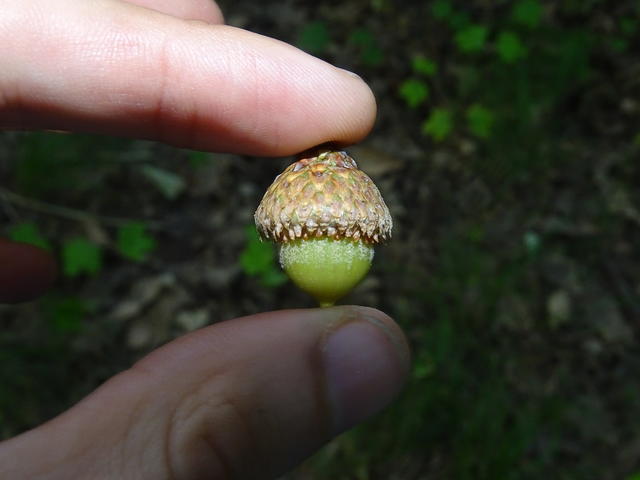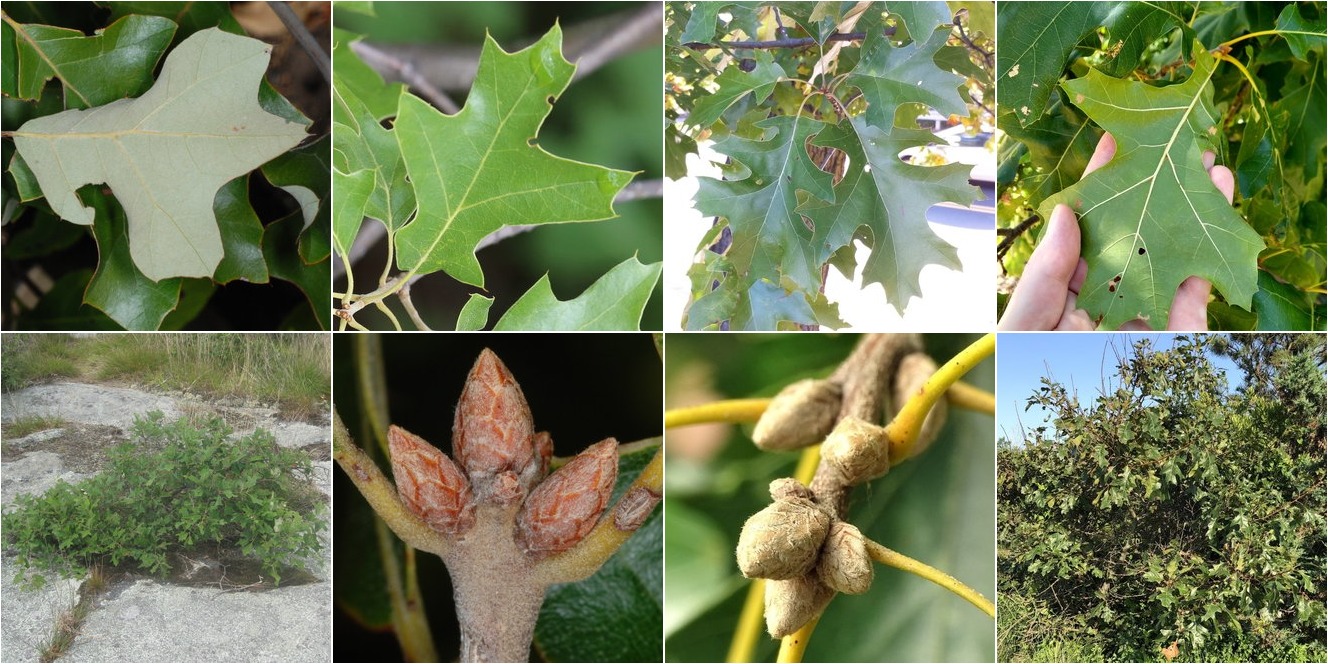Scarlet Oak (Quercus coccinea) vs. Black Oak (Quercus velutina)
Updated March 31st, 2023These two species are notoriously difficult to distinguish and have some overlap in characteristics. Black oak is more variable than scarlet oak. Some trees, especially young trees growing in shade, are easily identifiable as black oak, but others can be difficult to distinguish. Mature trees have similar bark. In identifications it is easier to exclude scarlet oak than black oak; black oaks can have pubescence on twigs and petioles. Acorns look similar but can be distinguished by the presence or absence of rings of pits, and the looseness of cap scales. A close view of the buds can also usually distinguish them. Black oak ranges farther north, west, and south and is more of a generalist that prefers dry, nutrient-poor habitats but can also occur in moister, richer habitats. Scarlet oak is less tolerant of shade and more restricted to in dry habitats with poor or thin soil.





